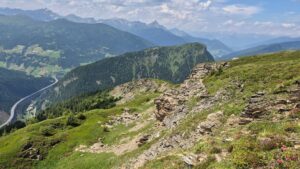Introduction to Soil Mechanics
Details
Full Title
Hands on Theoretical Foundations of Soil Mechanics and Interpretation of Field Test Results
Suggested by
Maria Honisch, Alaq Al-Rubaye, Mona Siahkouhi
The respective workshop calls for contributions regarding ...
- Geotechnical Engineering
- Soil Mechanics
- Experimental studies
- Environmental Geology
Keywords
soil mechanics, soil parameters, parameters estimation, geotechnical analysis
Type
Workshops
Description
Understanding soil behavior is fundamental to geotechnical engineering, especially in mountainous regions prone to landslides and slope instability. This session delves into the theoretical aspects of soil mechanics, providing participants with a comprehensive understanding of soil properties and their implications in geotechnical analysis.
Participants will get familiar with various laboratory experiments and techniques used to determine soil characteristics such as shear strength, compressibility, and permeability. Building upon data obtained from prior field excursions, and hand-on tests done during the session. The session will focus on analyzing and interpreting these results to assess slope stability and predict potential landslide scenarios.
Discussions will emphasize the practical application of soil mechanics theories in real-world contexts, enabling participants to connect theoretical knowledge with field observations. An important goal is to be able to understand which input parameters to choose for numerical modelling.
This collaborative environment aims to foster knowledge exchange and enhance participants’ skills in soil mechanics and geotechnical analysis.
Format/Concept
The workshop will combine informative presentations with interactive discussions:
- Presentations: Short talks by all participants highlighting key aspects of natural hazards and mitigation strategies in mountainous regions.
- Case Studies: Examination of selected real-world examples to illustrate successful mitigation efforts and lessons learned.
- Group Discussions: Open forums for participants to share experiences, discuss challenges, and brainstorm innovative solutions.
- Resource Sharing: Compilation of relevant literature, tools, and best practices for further learning.
Objective: Provide participants with a clear understanding of the different types of natural hazards common in mountain regions. Exchanging the ideas about mitigation strategies and brain storming about new possible strategies.

